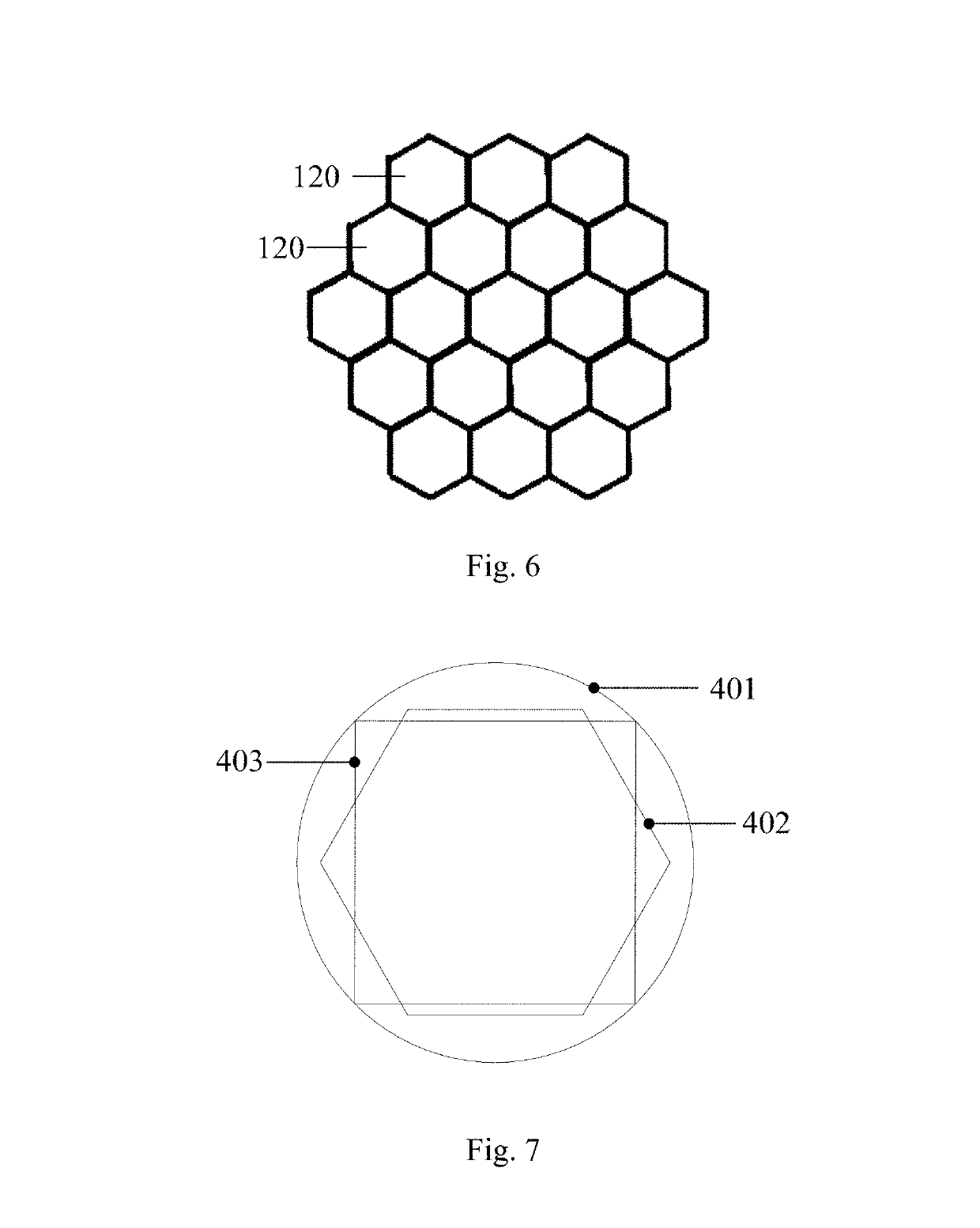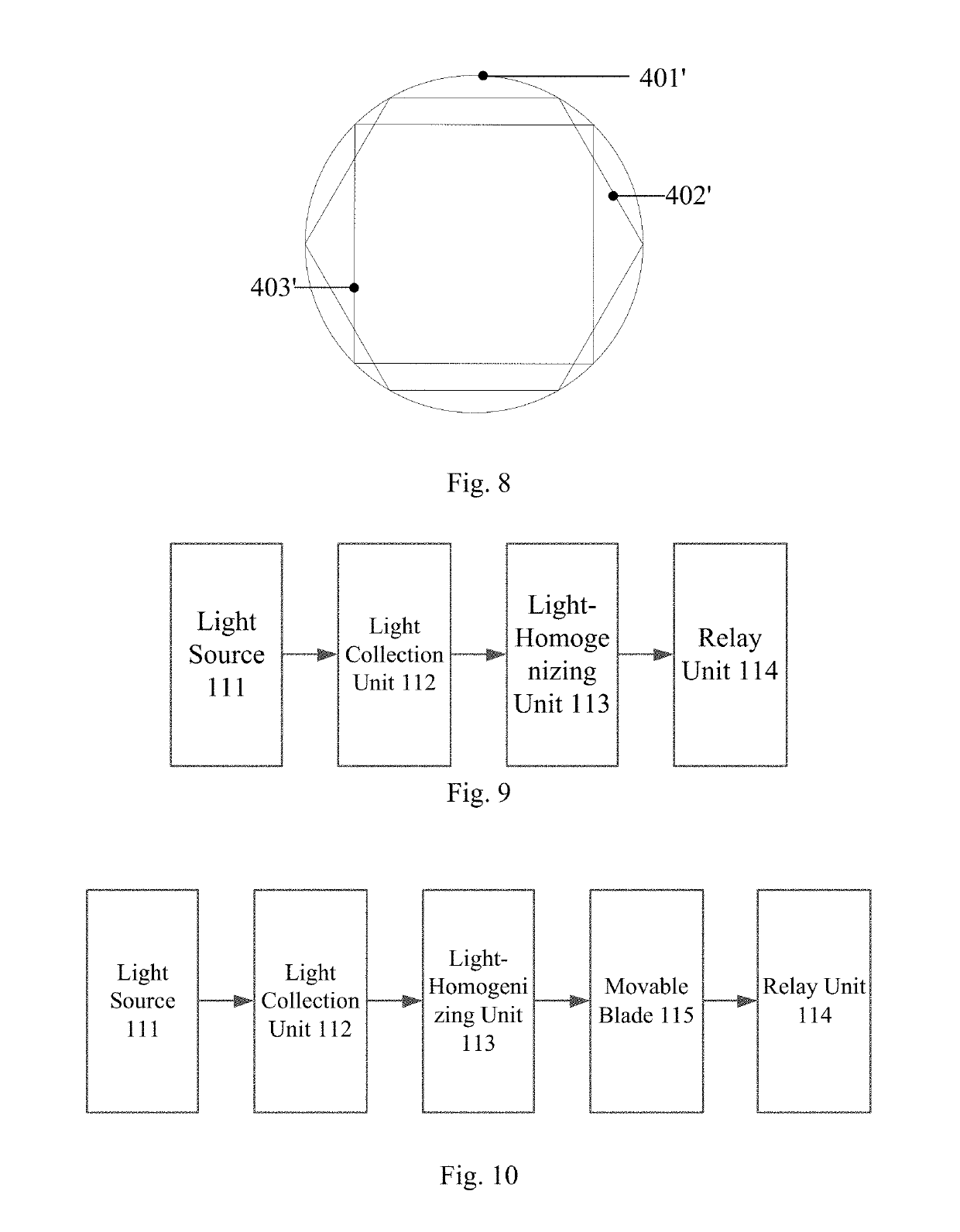Exposure apparatus and method
a technology of exposure apparatus and udof, applied in the field of photolithographic tools, can solve the problems of reducing the useful dof (udof), reducing the depth of focus, and reducing so as to reduce the impact of the projection objective, increase the area of exposure, and increase the udof of the projection objective.
- Summary
- Abstract
- Description
- Claims
- Application Information
AI Technical Summary
Benefits of technology
Problems solved by technology
Method used
Image
Examples
embodiment 1
[0044]FIGS. 3 to 6 show an exposure apparatus according to a first embodiment of the present invention, including an exposure unit 100 for exposing a wafer 200. The exposure unit 100 includes an illumination system 110 and masks 120. The illumination system 110 includes a light-homogenizing unit 113. The light-homogenizing unit 113 includes a light-homogenizing quartz rod 1131 having a regular hexagonal cross section. Each mask 120 also has a regular hexagonal cross section which matches with the cross section of the light-homogenizing quartz rod 1131.
[0045]Specifically, as shown in FIG. 5, the light-homogenizing quartz rod 1131 in the light-homogenizing unit 113 of the illumination system 110 of the exposure apparatus according to the present invention has a regular hexagonal cross section rather than a quadrilateral cross section. Additionally, as shown in FIG. 6, in the exposure apparatus according to the present invention, each of the masks 120 is designed as a regular hexagon w...
embodiment 2
[0054]An exposure method according to a second embodiment for use with the exposure apparatus of Embodiment 1 includes at least the steps of: so designing the light-homogenizing quartz rod in the light-homogenizing unit of the illumination system that it has a regular hexagonal cross section; and so designing the masks that each of them has a shape matching with the cross section of the light-homogenizing quartz rod. A hexagonal field of exposure created by the cross-sectionally hexagonal light-homogenizing quartz rod has a shorter diagonal than a quadrilateral field of exposure of the same size, thereby reducing the impact of the projection objective over DoF and hence allowing a greater UDoF of the projection objective. Additionally, with the same DoF of the projection objective, a hexagonal field of exposure created by the cross-sectionally hexagonal light-homogenizing quartz rod is greater than a field of exposure created by a cross-sectionally quadrilateral light-homogenizing q...
PUM
| Property | Measurement | Unit |
|---|---|---|
| energy | aaaaa | aaaaa |
| surface profile | aaaaa | aaaaa |
| depth of focus | aaaaa | aaaaa |
Abstract
Description
Claims
Application Information
 Login to View More
Login to View More - R&D
- Intellectual Property
- Life Sciences
- Materials
- Tech Scout
- Unparalleled Data Quality
- Higher Quality Content
- 60% Fewer Hallucinations
Browse by: Latest US Patents, China's latest patents, Technical Efficacy Thesaurus, Application Domain, Technology Topic, Popular Technical Reports.
© 2025 PatSnap. All rights reserved.Legal|Privacy policy|Modern Slavery Act Transparency Statement|Sitemap|About US| Contact US: help@patsnap.com



